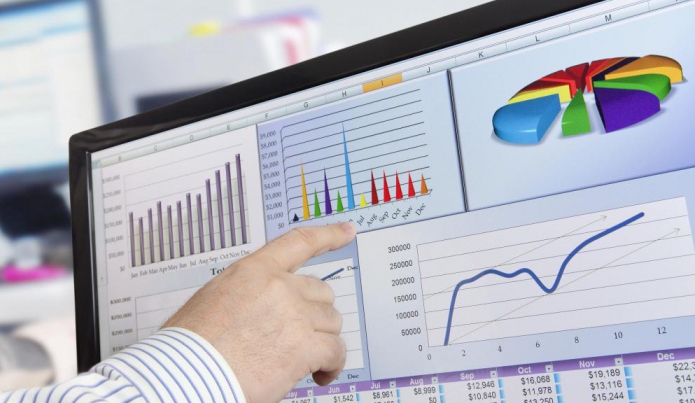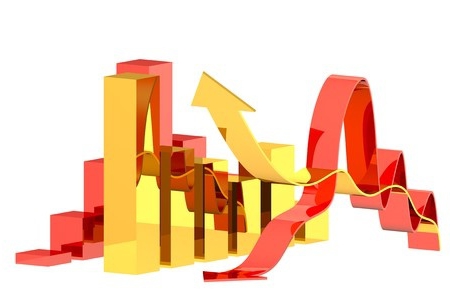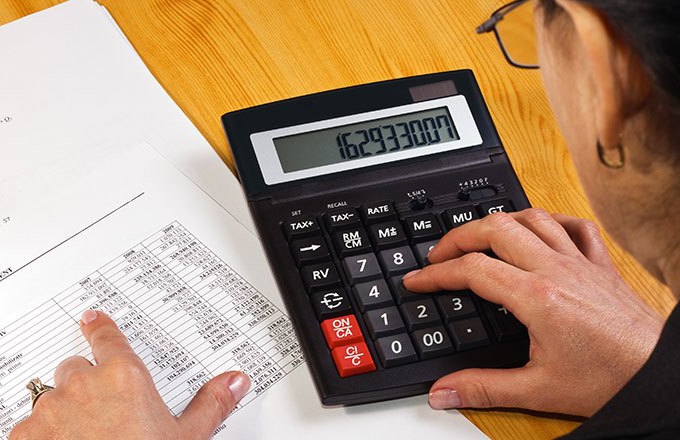Solvency and liquidity are the main characteristics of the financial condition of any company. A solvency analysis allows you to evaluate the financial capabilities of the company as a whole when debt repayment is required. Liquidity is understood as the sufficiency of available funds and other options for paying debts.
Features of solvent enterprise

The solvency of any company is determined by its working capital, which, in turn, is determined by the difference between current assets and short-term liabilities. The company will have capital until short-term assets are not became bigger than him. Solvency analysis allows you to evaluate the company's net current assets. When working capital rises, cash outflows occur, and when it falls, a company has to take out loans and borrowings.
How not to go bankrupt
If a company is declared insolvent, the question arises of its liquidation or reorganization. In addition, if she cannot pay as part of her short-term obligations, creditors have the right to file a lawsuit against the company in order to declare it bankrupt. Bankruptcy is of two types:
- A debtor who is accused of frivolity, inconsistency or dishonest conduct of business (conducting speculative operations, gambling or insufficient accounting) is recognized as a simple bankrupt.
- A company that committed unlawful acts with the aim of mislead lenders or specifically overestimated the sources of the company's property formation.
Bankruptcy Criteria

Timely solvency analysis is an opportunity to prevent probable bankruptcy. Its main features are:
- Wrong structure of current assets, which leads to insolvency of the company.
- Slow turnover of working capital due to excessive stocks or delinquencies in debt.
- Costly loans and borrowings that were taken by the organization.
- A large amount of receivables that was written off as loss.
- The analysis allows timely identification and elimination of such negative trends that may lead to bankruptcy of the enterprise.
Features of the analysis
Analysis of the solvency of the enterprise and the determination of its financial condition is the main type of source of information about the company. Moreover, the main document is financial statements, and an extended analysis can be carried out on the basis of accounting and tax accounting registers and in general all information that can tell about the volume of company assets. By assessing the level of solvency, you can perform the following work:
- regularly forecast the financial position and stability of the company;
- monitor the timely fulfillment of company obligations;
- increase the trust of partners and investors for joint activities;
- fully repay loans and evaluate the effectiveness of their use.
What is the theory?

Analysis of the solvency of an enterprise is determined primarily by its liquidity. Therefore, an important role is played by liquidity ratios, which make it possible to determine the company's ability to fulfill its own obligations at the expense of the funds left on the account or at the cash desk of the organization. The main factors for assessing the solvency of a company are:
- current liquidity;
- provision of debtor's obligations with its assets;
- solvency on current liabilities of the company.
Types of solvency
Analysis of the solvency of the enterprise allows you to assess the degree of its security. For this, the values of instant, short-term, medium-term and long-term solvency are analyzed. Instant solvency is the same liquidity, that is, the company's ability to timely pay its Short-term liabilities. Settlements most often coincide with accounts payable, which must be repaid in one year.
Short-term solvency is assessed by comparing current assets and payables, which must be repaid within a year. Most often, this is the current ratio. If analyzing long- and medium-term solvency, the following indicators are calculated:
- positive net worth of the organization;
- ratio of borrowed and equity;
- interest coverage;
- loan repayment schedule.
What is solvency made of?

When analyzing the solvency of an organization, it is assumed that two factors are considered - the availability of assets and their degree of liquidity. Analysis of the first component plays an important role, since if a company does not have net assets, then it simply will have nothing to pay for its obligations.
A more stringent indicator of the solvency of the company is the ratio of own funds. It is approved by the Federal Insolvency Office and is calculated using a specific formula. Analysis of the solvency of the organization is carried out taking into account special financial ratios: current, quick and absolute liquidity.
Liquidity ratio calculation
All three ratios are calculated according to the same principle: the ratio of current assets with different indicators of liquidity and current liabilities is taken into account. When calculating current liquidity, current assets are taken into account, quick liquidity - liquid current assets, absolute liquidity - highly liquid assets.

The analysis of solvency indicators can be carried out according to the balance sheet monthly or quarterly. But settlements with creditors must be conducted every day. That is why an operational analysis of current solvency is carried out in accordance with the payment calendar, which displays the following data:
- daily receipt of funds due to the sale of products or the provision of services;
- receipts of funds that came as a result of repayment of receivables;
- other cash receipts.
The calendar is compiled on the basis of information about the shipment and sale of goods or the acquisition of capital goods.
Enterprise liquidity: what is it?
Liquidity is understood as the company's ability to timely repay short-term debt on funds received from the sale of current assets. The degree of liquidity may be different, depending on the type of current assets. The analysis of liquidity and solvency is carried out on the basis of three main ratios, which we have already mentioned above. Now consider their features in more detail.
Types of liquidity
The so-called urgency ratio is calculated on the basis of the ratio of cash and securities to short-term payables. This indicator allows you to understand how much of the debt the company can pay at the time of preparation of the balance sheet. Allowable indicators are 0.2-0.3.
An intermediate analysis of liquidity and solvency is the ratio of cash and receivables to short-term payables.This indicator talks about the short-term obligations of the company, which can be repaid not only in cash or securities, but also the expected income that the company will receive as a result of the work or the provision of services. The recommended value for this indicator is 1: 1. Conclusions on this ratio can be made depending on the timing of the occurrence of receivables, the quality of its repayment and the financial condition of the company as a whole.
Analysis of the liquidity and solvency of the company involves taking into account the general liquidity ratio, that is, the general security of the company with working capital. This indicator is the ratio of the actual price of all current assets of the company and short-term liabilities, that is, liabilities.
Balance sheet liquidity
The current solvency of the organization depends on the liquidity of its current assets, that is, the possibility of converting them into cash or using them to reduce liabilities. Liquidity analysis allows you to evaluate the composition and quality of current assets in terms of their liquidity. And in this case, an important role is played by the analysis of the solvency of the balance sheet. He talks about the degree of coverage of the obligations of the enterprise with its assets, while they should be converted into money according to the maturity of the obligations.
The change in liquidity level is easily estimated based on the dynamics of own working capital firms. All assets that are needed to assess liquidity are divided into 4 groups: the most liquid assets, quick-moving assets, slow-moving assets and hard-to-sell assets. Liabilities are also divided into 4 groups depending on the urgency of repayment of loan obligations: the most urgent liabilities, short-term liabilities, long-term liabilities and permanent liabilities. The balance is considered absolutely liquid if the following inequalities are satisfied:
- A1> P1.
- A2> P2.
- A3> P3.
- A4
What does the law say?
According to the established standards, a preliminary analysis and assessment of the solvency of an enterprise is carried out in order to check the solvency of the company and to recognize the structure of its balance sheet as unsatisfactory if certain financial criteria are not met, if the liquidity ratio at the end of the reporting period is less than 2, and the provision with own funds for the same period of time is less than 0.1.
According to the legislation, the real ability of an enterprise to restore or lose its solvency for a certain period of time is based on the coefficient of restoration (loss) of solvency.
What to do with an insolvent enterprise?
Analysis of liquidity and solvency of an enterprise is an opportunity to timely prevent its financial problems. But if it is established that the company is insolvent, and its balance sheet structure is unsatisfactory, a detailed analysis of all documentation, including financial statements, is carried out. At this stage, the reasons that led to the deterioration of the financial condition of a particular company are analyzed.

True, often a financial analysis of the solvency of an enterprise, which is conducted on the basis of balance sheet information and the forms that are attached to it, does not provide comprehensive information. That is why the balance is subjected to thorough research, in which you can evaluate the status of specific indicators of the financial activities of the company, trace the direction of the balance change, and also analyze the data in comparison with the indicators of other enterprises in the same area.
Features of the analysis of the balance sheet currency
Analysis of stability and solvency requires careful attention to data on the balance sheet currency at the beginning and end of the reporting period.If during this period of time it has decreased, this indicates that the company's economic turnover has become lower. And this serves as the basis for checking the causes of this phenomenon, primarily the reasons for the reduction in demand for goods or services of this enterprise. If during the reporting period there was an increase in the balance sheet currency, then you need to understand why the revaluation of fixed assets occurred if the company's business activity remained at the same level. The most difficult in this analysis is to take into account the influence of inflationary processes.
Analysis of financial solvency involves the study and structure of the liability side of the balance sheet, which makes it possible to identify the causes of financial instability of the company. As a rule, the main financial problems are associated with an irrationally high share of borrowed funds in sources that are involved in financing business activities. At the same time, long-term loans and borrowings are considered sources of the company's own funds. They are also:
- authorized capital, including additional paid-in capital;
- reserve capital and reserve funds;
- accumulation funds;
- targeted financing, targeted income.
If for any of these points the share of the organization’s own funds grows, we can say that the financial stability of the company will increase. BUT undestributed profits can become a source of working capital replenishment of the enterprise and an opportunity to reduce the level of short-term accounts payable.
Analysis of short-term debt

Analysis of solvency and stability of the company involves paying attention to the structure of short-term debt on loans. As part of the analysis, it is advisable to verify the following data:
- short-term bank loans and various loans;
- debts to other companies;
- debts to the budget, social insurance, extra-budgetary funds;
- wage arrears.
If a trend was found to increase the share of borrowed funds, then this indicates, firstly, the increasing instability of the company from a financial point of view, and secondly, the active redistribution of income from the lender to the debtor.
If assets have changed
As part of the analysis of solvency of the enterprise, close attention is paid to the analysis of the structure of assets. Their research is carried out from different points of view - both from the position of their participation in production, and in relation to their liquidity. The production cycle, as a rule, is carried out using fixed assets, intangible assets, stocks, costs and cash. The most easily liquid assets are the funds in the account, short-term securities, and the most difficult to sell are fixed assets that are on the company's balance sheet. If the change in assets increased the share of working capital, this indicates several features:
- The fact that a more mobile asset structure is being formed, which will accelerate the turnover of company funds.
- The fact that there is an actual immobilization of part of the working capital.
- The fact that the real assessment of fixed assets was distorted, for example, with improper accounting.
Thus, a timely analysis of the solvency of the company is able to provide a lot of useful information about its activities and financial condition.








